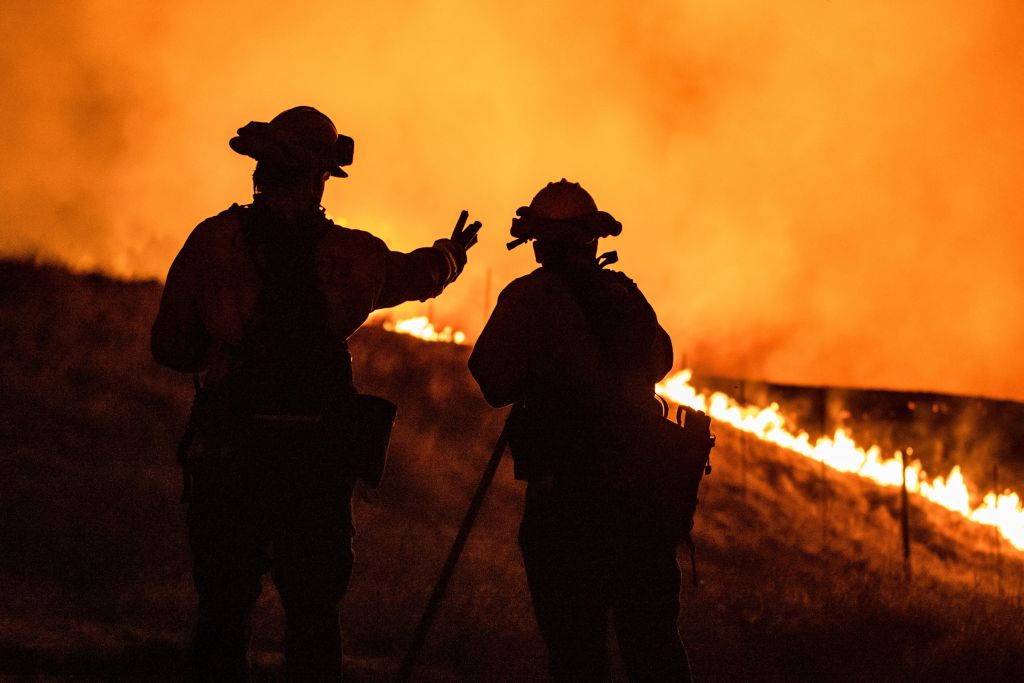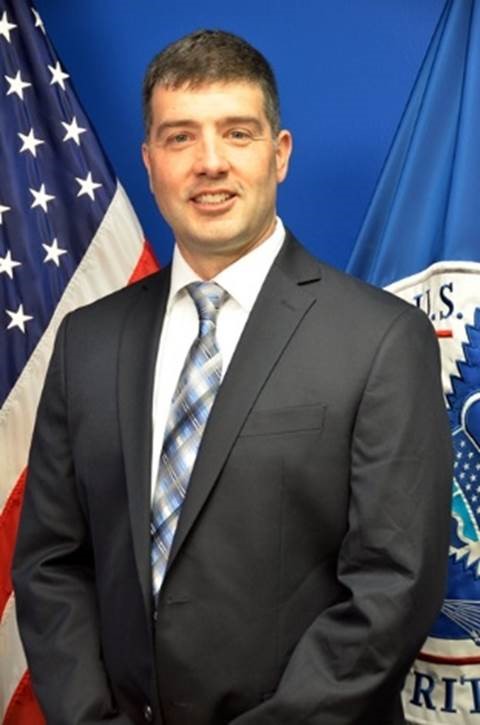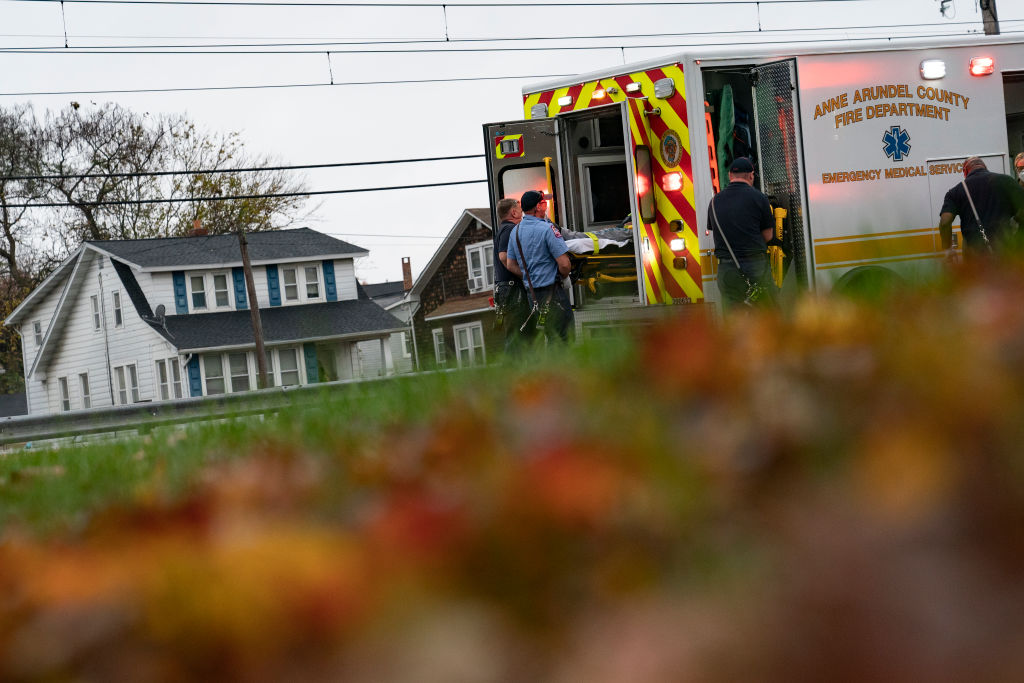
It may sound surprising in an era characterized by increasingly destructive wildfires, but Stephen Jellie just spent the past year trying to get rid of firefighters.
Jellie is the fire chief and city manager of Ogdensburg, N.Y., a town on the Canadian border that’s small and getting smaller—10,064 lived there in April 2020, down from 12,375 in 1980. The city kept raising taxes to try to save itself from financial distress, but costs were spiraling out of control. “We let it creep—we just kept putting resources into public safety,” he told me. “But you can’t run a city with just a fire department and a police department.”
Ogdensburg isn’t unusual in cities and towns across the U.S.—even as the number of home fires has fallen significantly over the past few decades, spending on municipal fire departments has skyrocketed. There are 55% more career firefighters in the U.S. than there were in 1986, according to the National Fire Protection Association. But the number of home structure fires fell 54% over the same time period, due mostly to updated building codes and advanced sprinklers, according to NFPA data.
The numbers underscore a problem that is coming into clearer view with every wildfire season, as infernos rampage across the western U.S.: the country’s firefighting system is woefully outdated. As the federal government faces huge obstacles filling 10,000 federal firefighter positions, small cities and towns are dotted with fire stations overstuffed with well-trained full-time personnel who aren’t putting out a lot of fires, because there aren’t many.
Just 1.3 million—around 3.5%— of the total fire department calls in 2019 were for fires, while 24.5 million—66%—were for medical aid, according to NFPA data. But there are now 370,000 career firefighters in the U.S., more than there were four decades ago when there were roughly double the number of fires reported.
Together with the police, the Ogdensburg fire department accounted for 59% of the city’s 2020 budget, Jellie says. The parks and recreation department accounted for 4.5%, and public works accounted for 18%, by contrast. Including salaries, pension, and health insurance, some firefighters cost the city more than $130,000.
In late 2020, looking to prevent the city from falling into bankruptcy, Jellie controversially cut the number of firefighters to 20 from 27 and mandated that four, rather than five, be on duty at one time. It’s a move that he says countless cities across the country are going to have to do going forward.
“I spent my entire life in the fire business,” says Jellie, who has worked as a fire chief for almost two decades, including as a fire chief with the U.S. Armed Forces in Afghanistan. “But I took a look at what is required here, and the number of structure fires is going down, calls are going down, and the fire department doesn’t need to go on every medical call.”

The spending on firefighters is proving costly for cities and towns that are looking to trim their budgets as the pandemic continues to gut businesses whose taxes fund those budgets. In some cities, public safety accounts for as much as 75% of municipal spending. While “defund the police” has been a refrain among many protesters in the wake of George Floyd’s killing, it’s the fire department that many cities could more easily cut back.
“How do you keep these services funded?” says Thomas Wieczorek, a former police officer, fire chief, and city manager who is now the director of the Center for Public Safety Management, a consulting firm. “Something’s got to give—you have to cut staff, cut services, or find other ways to pay for it.”
The evolving city fire department
A century ago, a fire could spread quickly and destroy an entire city. Firehouses became ubiquitous as cities began establishing fire departments and putting fire stations in central locations so trucks could get to emergencies quickly. As building codes improved and fires became less frequent in the 1980s, fire departments began responding to other 9-1-1 calls.
“We used to think that fire departments occasionally do EMS runs,” says Wieczorek, noting that’s no longer the case. “We’re EMS departments that occasionally make fire runs.” In Jellie’s town of Ogdensburg, for example, the fire department responded to 878 EMS-related incidents in 2020.
Many firefighters say that sending fire trucks to every 9-1-1 call saves lives and property and often ensures more immediate care. If the person calling for help can’t adequately describe the emergency, a dispatcher sends a fire truck loaded with personnel in case of a huge structure fire, says Curt Floyd, Technical Lead-First Responders for the National Fire Protection Association. If a large person needs to be carried out of a house, four firefighters might be needed. Besides, he says, firefighters have made themselves essential in other ways—responding to building collapses like the one in Miami, carrying Narcan to respond to drug overdoses, dealing with electric batteries and other energy storage systems that can be extremely dangerous if they catch fire.
“We really have evolved from a fire department to an all-hazards department,” Floyd says.
There’s no question that firefighting is a dangerous job that requires workers to risk their lives to protect their communities. In 2019, 48 firefighters died on duty in the U.S., and firefighters are at a higher risk for cancer than the general population. And the structure fires that do happen are still extremely dangerous—more than 2,700 people died in home fires in 2019.
We really have evolved from a fire department to an all-hazards department.
But some cities have started to question the economics of paying firefighters to respond to medical calls.
“Fire departments’ continued insistence on clinging to a 100-year-old response model designed to fight structure fires makes no sense given the modern reality that structure fires are the exception and medical emergencies are the norm,” a civil grand jury in Santa Clara County, which encompasses dozens of communities in fire-plagued Northern California, concluded. The county convened the grand jury in 2011 as it faced budget issues and complaints about fire departments over-deploying resources in response to non-life-threatening medical emergencies.
When the grand jury asked fire departments why it sent firefighters to medical calls, chiefs said they wanted to exercise the crew, to ensure equipment was operational, and to get productivity from staff who would otherwise be “standing by.” Fire departments consider all calls to be fire-related until firefighters themselves can see the nature of the emergency, even if it is a broken arm or a heart attack, firefighters told the grand jury.
Of the 37 million calls fire departments received in 2019, almost 25 million were for medical aid. Just 1.3 million were for fires. Yet firefighters are paid significantly more than EMS workers or paramedics. The average EMT, or emergency medical technician, nationally makes $17.62 an hour, according to the Bureau of Labor Statistics. Firefighters employed by local governments make, on average, $27.64 an hour.
Parts of Michigan are having trouble finding EMS workers, Wieczorek says, in part because workers only make $12 an hour—less than if they worked at Burger King. In New York City, which merged its firefighting and EMS in 1996, more than 80% of the 1.7 million incidents to which the department responded were medical, but the base pay for an EMT is $50,604 after five years on the job, while a firefighter’s base pay for the same years of experience is $85,292.

By comparison, until recently, federal firefighters on the front line of increasingly furious wildfires made as little as $13 an hour—President Biden said in June he was raising their minimum wage to $15. Employed by the U.S. Forest Service, federal firefighters often spend weeks or months away from their families, working 72-hour weeks, sleeping in tents, walking the fire lines.
The pay gap has grown increasingly problematic as wildfires spiral out of control. This year’s federal budget has funded around 10,000 wildland firefighter positions in the US. Forest Service, the same as previous years, according to a Forest Service spokeswoman. With many large fires erupting simultaneously in different parts of the country—a change from the past, when blazes tended to be concentrated in specific areas at different times in the fire season—it has become difficult “for these resources to be moved as effectively” as needed, the spokeswoman said in an email. In July, Stateline reported that only half of the U.S. Forest Service fire engines in the California region were fully staffed and able to run seven days a week, and that hundreds of jobs were sitting open.
Read more: Wildfires Are Getting Worse, So Why Is the U.S. Still Building Homes With Wood?
States like California have also relied on inmates to help fight forest fires, but Calif. Gov. Gavin Newsom is trying to reduce the state’s prison population, and so the state is winding down some of its inmate firefighter training facilities. The state also had to sideline hundreds of inmate firefighters in 2020 after 12 prison fire camps were potentially exposed to the coronavirus through outbreaks in prisons.
Experts say there’s also a need for more money to be spent on fire prevention as climate change leads to drier winters and more fires. Spending on wildfire resilience–preparing the landscape to be more fire-resistant—has been flat over the past decade, while suppression costs have grown 400%, according to Cecilia Clavet, a senior policy advisor at The Nature Conservancy. She estimates that $5-6 billion a year is needed to start thinning forests and make landscapes less susceptible to wildfires. (By contrast, around $50.4 billion was spent on local fire protection in 2017—10 times what was spent in 1980, according to the NFPA.)
“I do not believe that we are properly resourcing the fight we have in front of us – which is climate change,” said Cindy Chavez, a supervisor with Santa Clara County who has led efforts to find new solutions for the region’s fire departments because of the increased threat of wildfires. Local governments need equipment like helicopters and bulldozers, she says, and surveillance technology to catch fires as soon as they’re started. “It’s going to get more expensive.”
The places that changed their fire departments
A few cities have made adjustments. Tulsa, Okla., stopped sending fire trucks to every 9-1-1 call—fire chiefs decided if they sent unneeded resources to low-risk medical calls, there wouldn’t be resources available if a bigger emergency came in. The city found that even if fire trucks arrived at the scene earlier than ambulances, that extra time didn’t necessarily lead to better patient care.
Tulsa also stopped using red lights and sirens to respond to lower-priority medical calls, eliminating almost 230,000 uses of red lights and sirens over the course of two years. This reduced noise pollution and traffic collisions caused by cars getting out of the way of emergency vehicles.
Sunnyvale, Calif., is one of the few U.S. cities with an integrated “public safety” department in which officers are all trained to provide police, fire and EMS services, and to respond to any call that comes in when they are on duty. Though officers bid on their primary assignment, whether it be police or fire, they have to be comfortable doing either. Patrol officers might respond to a big fire and put on fire uniforms that they keep in the back of their SUVs, says Phan Ngo, chief of the Sunnyvale Department of Public Safety. Since residents see officers helping with fires and responding to ambulance calls, they’re less skeptical of police than are residents of other cities, Ngo says. Best of all, “we like this model because there’s cost savings,” he says, of the setup, which is how Sunnyvale has run public safety since about 1950. “You only have one set of administrators running public safety.”
But even in regions that need help fighting more forest fires, it’s been nearly impossible to condense municipal fire departments. After the Santa Clara grand jury found that “fire departments as currently configured are unsustainable.,” it recommended consolidating local fire departments and allowing cities to “right-size” staffing, regardless of longstanding union contracts.
Read more: West Coast Farmers Had a Hellish Summer. It Might Not Be an Aberration.
Cities and fire departments across the county responded to the grand jury report by filing letters disagreeing with its findings, and little has changed since then.
Dave Cortese was on the Santa Clara County Board of Supervisors at the time, and since the grand jury released its findings, he has been trying with little success to get different cities in the county to follow its recommendation. The need for consolidation grew evident during the 2020 CZU and SCU Lightning Complex Fires, which burned in Santa Clara County. Because there were so many different fire departments, residents were having a hard time knowing when they needed to evacuate and where to go, says Cortese, who is now a state senator.
Last year, he suggested that three fire departments in the county consolidate. But Cortese was the lone supervisor who voted in favor of the plan. Even though resources badly need to be moved around to deal with changing fire priorities, he says, no one wants to give up having a local fire department.
“It’s almost a local patriotic thing to have your own fire department—the first vehicle in the parade is the fire department, and folks are going to be emotional about holding onto the status quo,” he says But as wildfires get worse, he says, the state will have to find a way to make its firefighting system more efficient.
It's almost a local patriotic thing to have your own fire department—the first vehicle in the parade is the fire department, and folks are going to be emotional about holding onto the status quo.
Stephen Jellie will tell him that it’s going to be a challenge. The local firefighters union in Ogdensburg sued the city when it cut fire positions, arguing it was violating their labor contract, and the case was fought all the way to the state Supreme Court. Jellie eventually prevailed, but firefighters loudly opposed the plan. In September 2020, six months before the court ruling, three people were ejected from a raucous City Council meeting that Mayor Jeffrey M. Skelly described, in a letter to local media, as smelling of alcohol from “so-called public servants” who were trying to “intimidate, frighten, and bully those of us elected to office.” The union accused the mayor of trying to smear the Fire Department and said the meeting was “passion-fueled” because of members’ frustrations.
But Jellie thinks residents are beginning to come around to his way of thinking about how much the city spends on firefighters. All but one of the firefighters have found other jobs in city departments, he says.
He reduced property taxes by 10%, and Ogdensburg now has a $1.4 million surplus in its general fund. For the first time in a long time, the city was this year able to buy new defibrillators for the volunteer rescue squad, at $175,000 a pop. They at least will be better equipped to deal with all the medical emergencies that have nothing to do with fire.
More Must-Reads from TIME
- Why Biden Dropped Out
- Ukraine’s Plan to Survive Trump
- The Rise of a New Kind of Parenting Guru
- The Chaos and Commotion of the RNC in Photos
- Why We All Have a Stake in Twisters’ Success
- 8 Eating Habits That Actually Improve Your Sleep
- Welcome to the Noah Lyles Olympics
- Get Our Paris Olympics Newsletter in Your Inbox
Contact us at letters@time.com